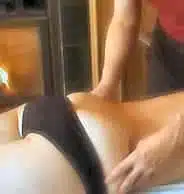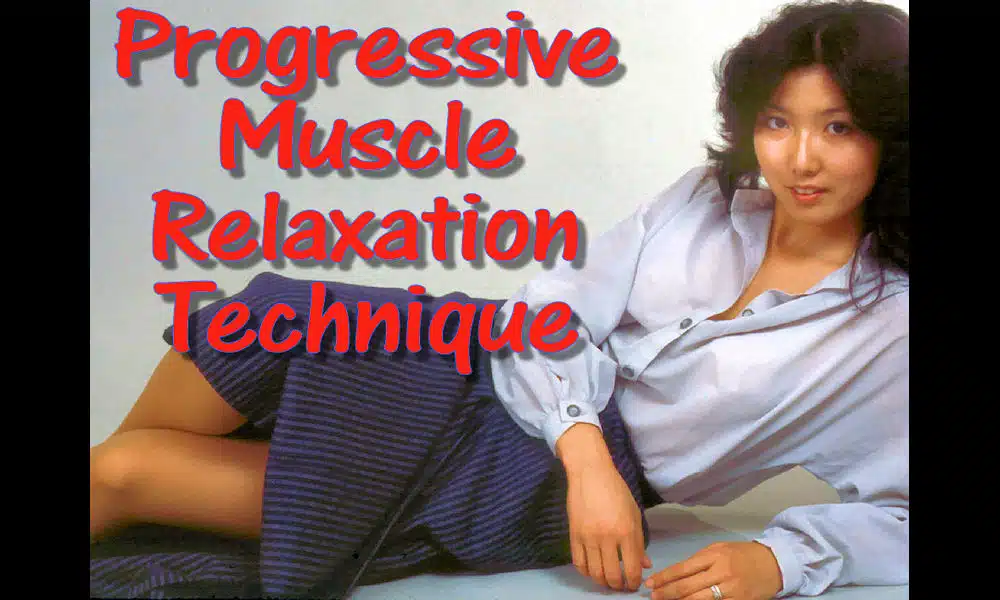Progressive Relaxation Technique — an oldie but a goodie! The next few articles will be about getting into your body.

Check out our program,
Finding Your Flexibility.
Learn to deal with pain by using tools like yoga, meditation and Qi Gong.

If you are not in a relationship, and want to do a much better job finding a partner that suits you, have a look at my book, Find Your Perfect Partner. You’ll find the tools you need to engage your brain!
Let’s have a look at several techniques for dealing with stress — all without drugs.
Back when I was a therapist I was pretty well known for my aversion to drugs… and by that I mean “mind drugs.” I still get a bit incensed over the push to medicate, despite most of the drugs being of questionable effectiveness.
And then there’s the whole process of weaning people off of the drugs they become addicted to.

Because of my interest in Bodywork, of course my focus would be on the physical things we can do to deal with the effects of stress.
Wilhelm Reich, the father of Bodywork psychotherapy, was the first to grasp what people did with stressors.
He noticed what he called “character armour.” In other words, when stressed, people tighten their muscles, and soon, the acute tightening becomes “chronic.”
Bodywork provides a way out — using pressure on the “tightened part” creates the environment to “let the stressor go.” Not only do you discover how and where you “hold” stress, you also discover that even deeply held stress can be “dropped.”
Sadly, finding Bodyworkers is difficult.
The good news is that you can get a handle on what your body is doing. In a second, I’ll walk you through an exercise you can try. But I also want to make a couple of Bodywork suggestions.
Alternatives to Bodyworkers:
- Deep tissue massage therapists (Rolfers, deep tissue): The Rolfers I’ve worked with really get in there. Best if you decide to to a “full round” or Rolfing, which involves multiple sessions.
- Acupressure: some acupressure people know about Bodywork — you’d have to ask around.
- “Regular” massage therapists: again, ask around. My experience has been mixed to negative, as even massage therapists who advertise as “deep tissue” really aren’t pushing all that hard.
- Lastly, “regular” massage therapists are NOT trained to deal with the emotions that arise from deep Bodywork. Most will immediately pull back. I’ve never come up with a solution for this.
Progressive Muscle Relaxation Technique
This muscle relaxation technique doesn’t require much exertion for it to be effective; that’s probably why it is so popular.
It works best on the type of muscular tension that causes body aches and headaches — pains that you have likely had for days; pains that may even have “gone background” — you might not even realize they are still there.
Progressive muscle relaxation uses subtle movements to relieve tension and to begin to relax. The method is based on the idea that it’s easier to relax muscles by making small movements.
By tightening each muscle group and then releasing it, you start to feel more relaxed and less stressed.
It’s all about exaggerating each conscious “tightening and release” -– you become more aware of your muscles — more aware of when you’re holding tension. You then use the muscle relaxation technique to reduce your stress levels before the stress has a chance to get out of control.
How To Do Progressive Muscle Relaxation
- The first step is finding a room to practice this – it should be relatively quiet, dimly lit, and you should be able to sit comfortably or lie down.
- Close your eyes and start breathing deeply through your nose. Hold your breath for just a few seconds and then release it through your lips. Do this several times, and imagine that your body is becoming heavy and warm. Release any tension that you become aware of.
- Continue to breathe slowly and clench both of your fists, then tighten your biceps and hold the tension for several seconds. Now release the tension and let it ebb away. Your focus should be on the changing sensations in your muscles. As you allow the tension to flow from your arms, hands, and fingers keep your hands open to shake off the remnants.
Now, continue this pattern through each of the major muscle groups in your body.
- Face. Start by raising your brows and furrowing your forehead. Then squeeze your eyes closed as tightly as possible, and then clench your teeth. Finally, squeeze your face like a toddler would do after eating lemon for the first time. HOLD for five seconds, then slowly release.
- Neck. Slowly pull your chin toward your chest. Then turn your head to the right, then to the left, then back to centre. You should keep your shoulders relaxed but straight while you practice this technique. Tighten your neck muscles. HOLD for five seconds, then slowly release.
- Chest. Puff your chest out and take a deep breath. Tighten your entire chest. HOLD for five seconds, then slowly release.
- Shoulders. Shrug your shoulders, pushing them back for a few seconds, relax and then pull them forward. Roll your shoulders upward. HOLD for five seconds, then slowly release.
- Upper Back. You can either sit in a chair and allow your back to rest against the chair, or place a rolled up towel or bolster under your upper back. Push your body so that your upper back arches. HOLD for five seconds, then slowly release. (If this is uncomfortable or causes you pain then you should skip this one.)
- Abdomen. Pull your stomach in and then push it out, tensing it as though you were expecting a blow. HOLD for five seconds, then slowly release.
- Legs. Lift your leg and tense your calf and thigh muscles (prepare for cramping) and bring your toes toward you. Do each leg in turn first and then raise both of them before finally pointing your toes out as far as possible. HOLD each move for five seconds, then slowly release.
- Feet. Point your toes (all while keeping your legs down) and then pull them toward you before finally digging your feet into the floor. You should breathe deeply while you practice this exercise. HOLD for five seconds, then slowly release.
As you work through each group of muscles, you will feel warmth enveloping your body as you finally relax.
After you complete the exercise, take some down time and allow your muscles to rest. Just enjoy the relaxation before you rush back into action. You’re transitioning from total relaxation so you don’t want to undo your hard work by jumping up and diving back into your day.
While the total amount of time required to complete this exercise will vary from person to person it really doesn’t take much time at all. Remember to give yourself enough time to pause for 30 seconds between muscle groups, and to enjoy the peace once you have finished.
You may choose to do this in total silence, but relaxing music is an effective way to block out any background noise, which may break your focus.
